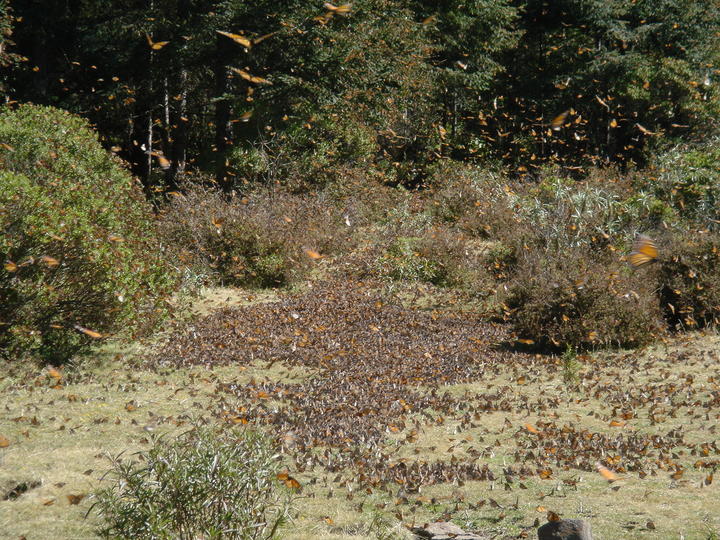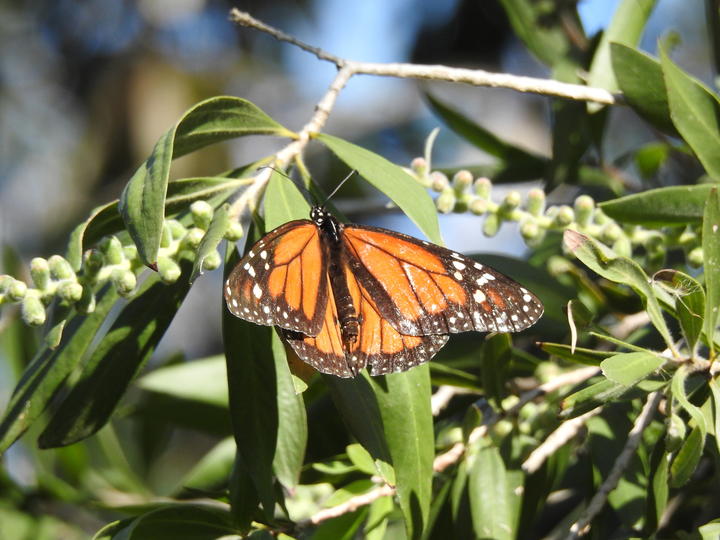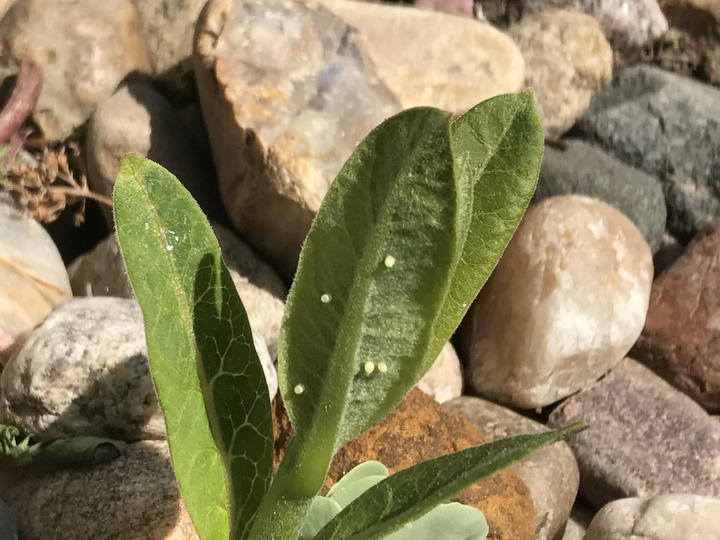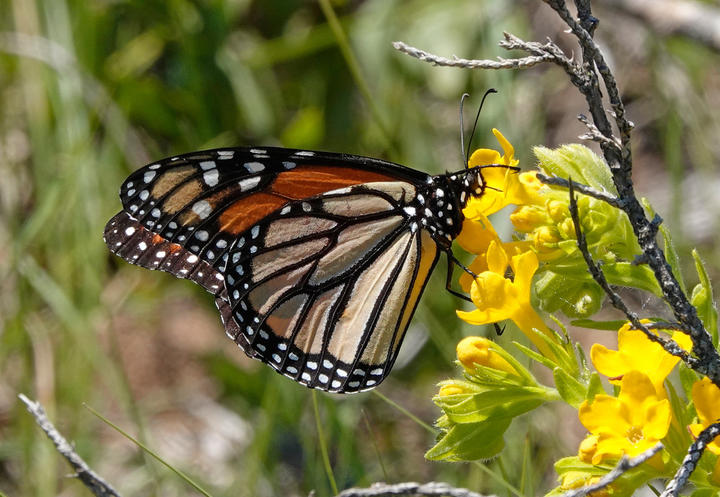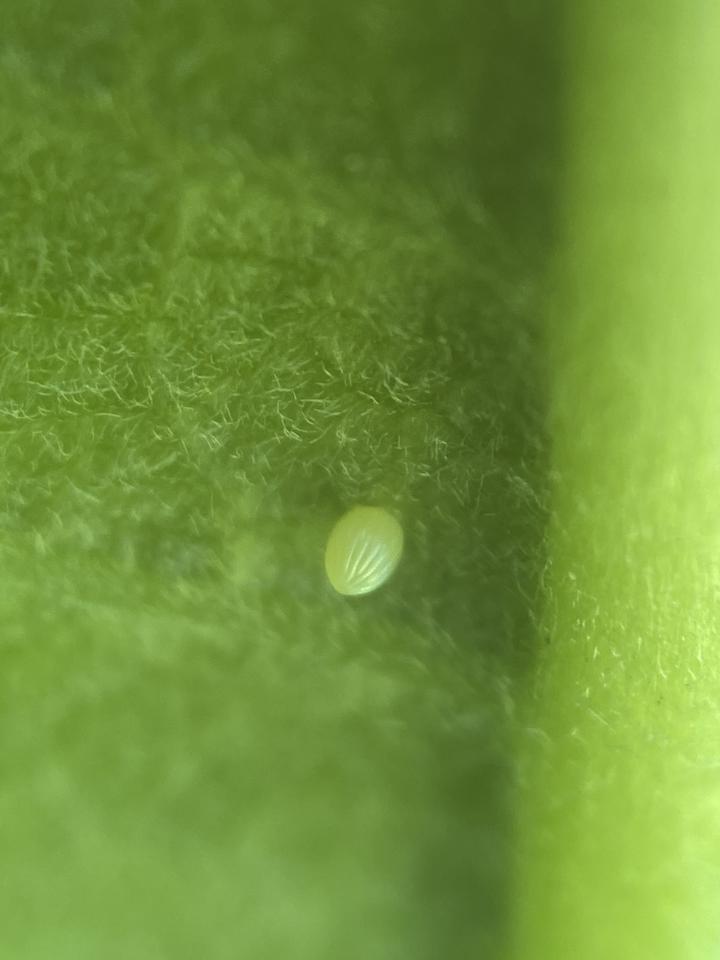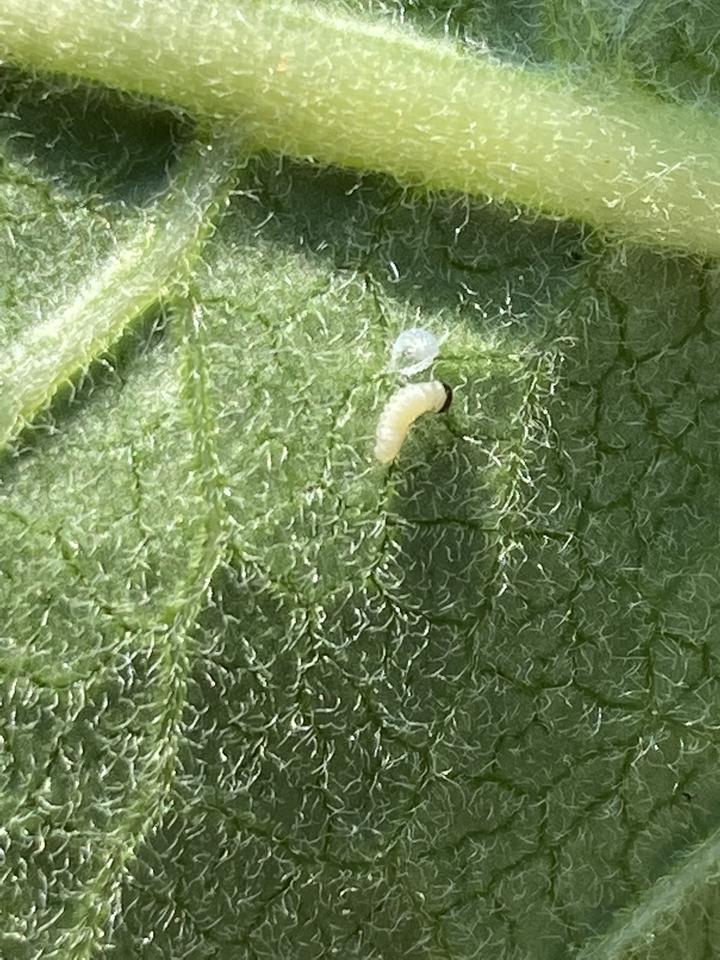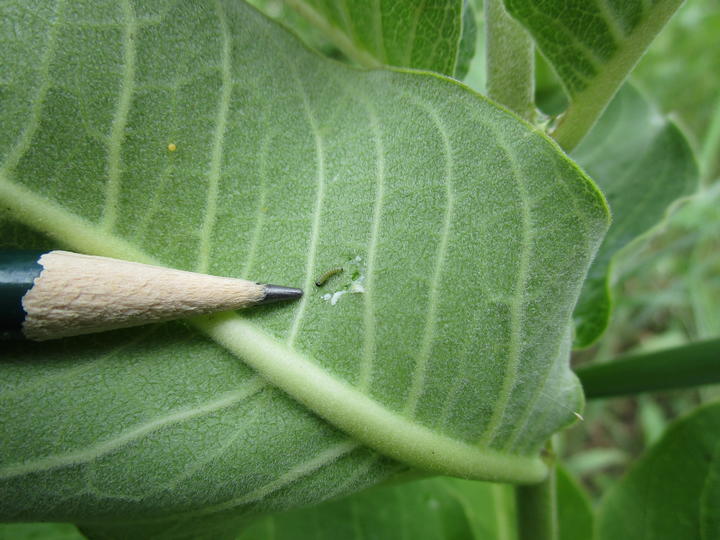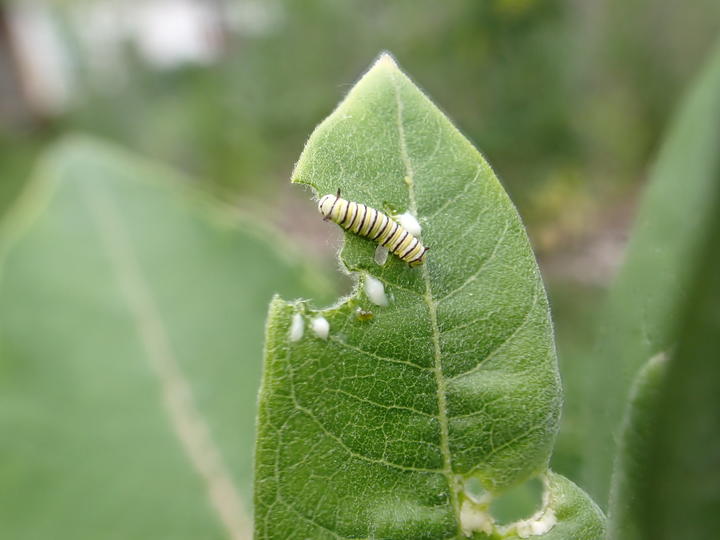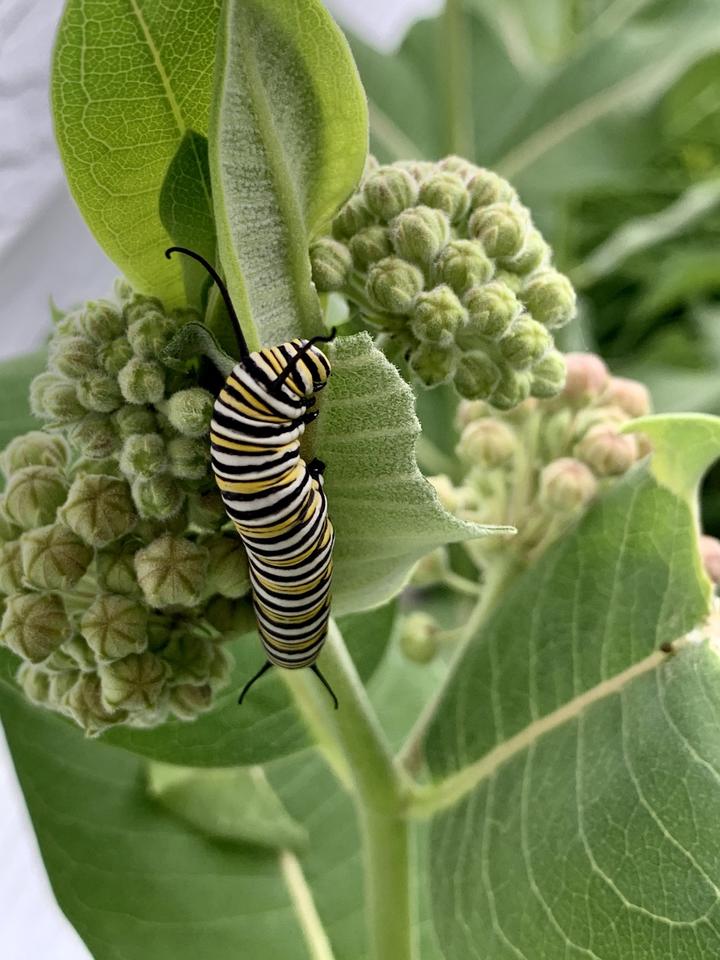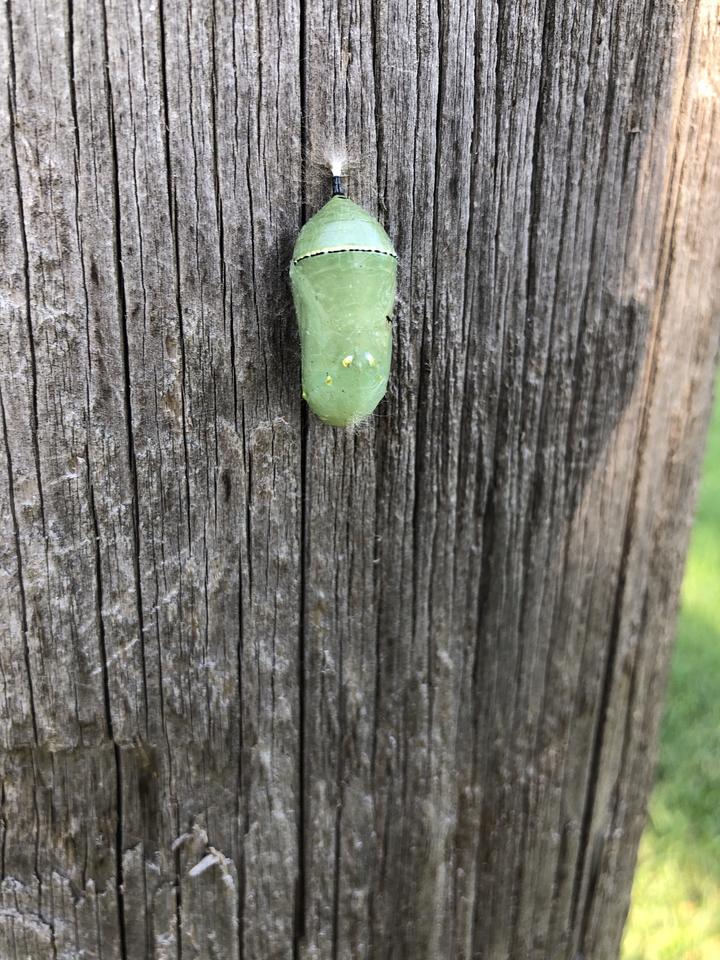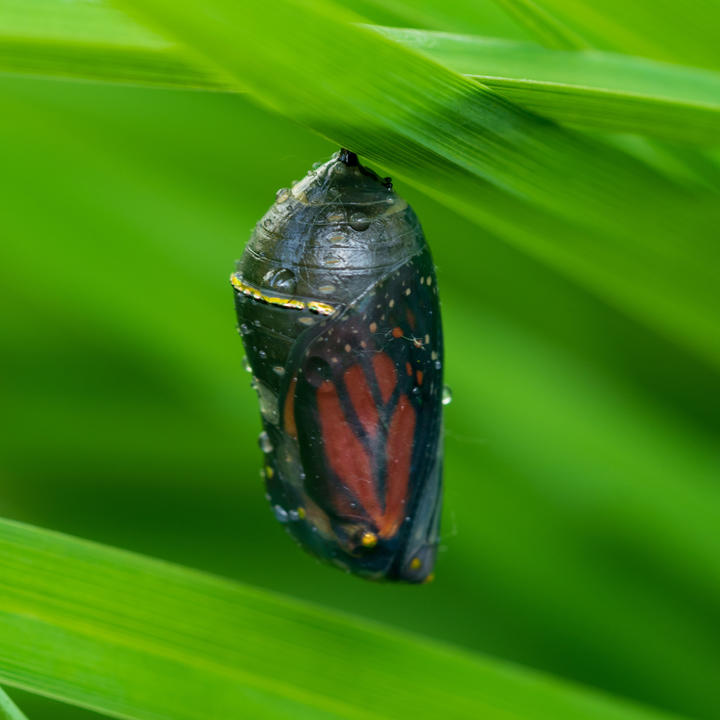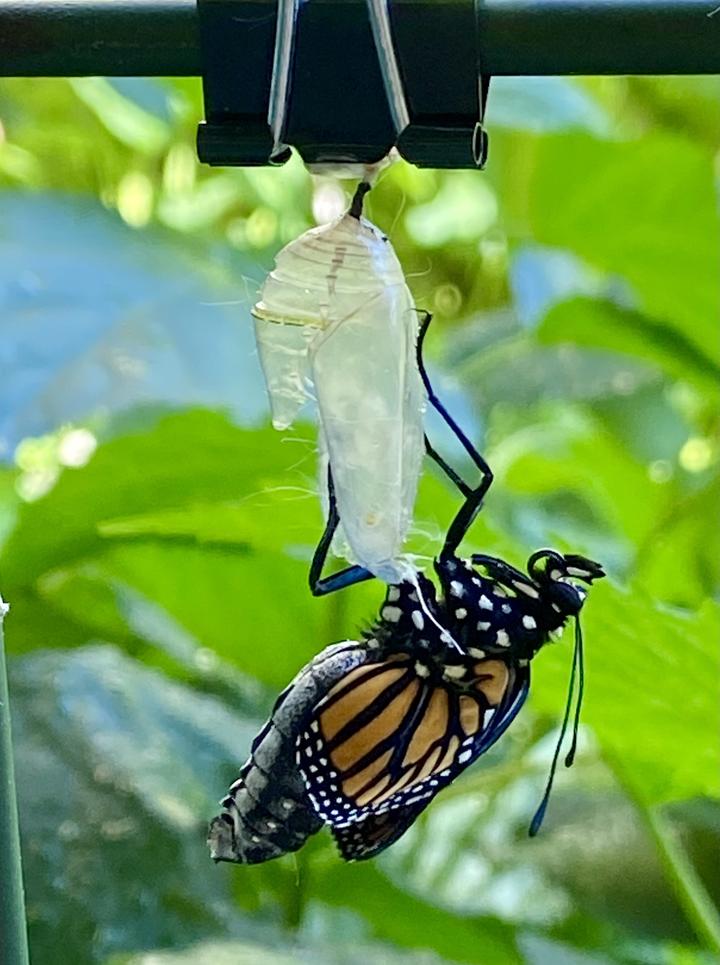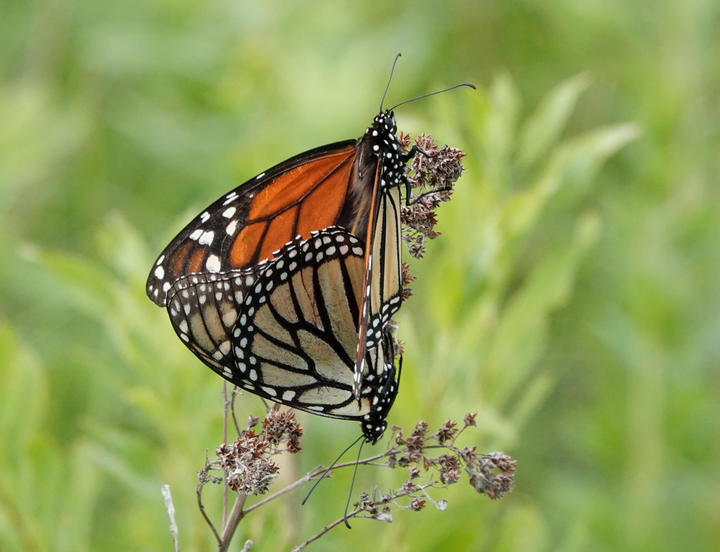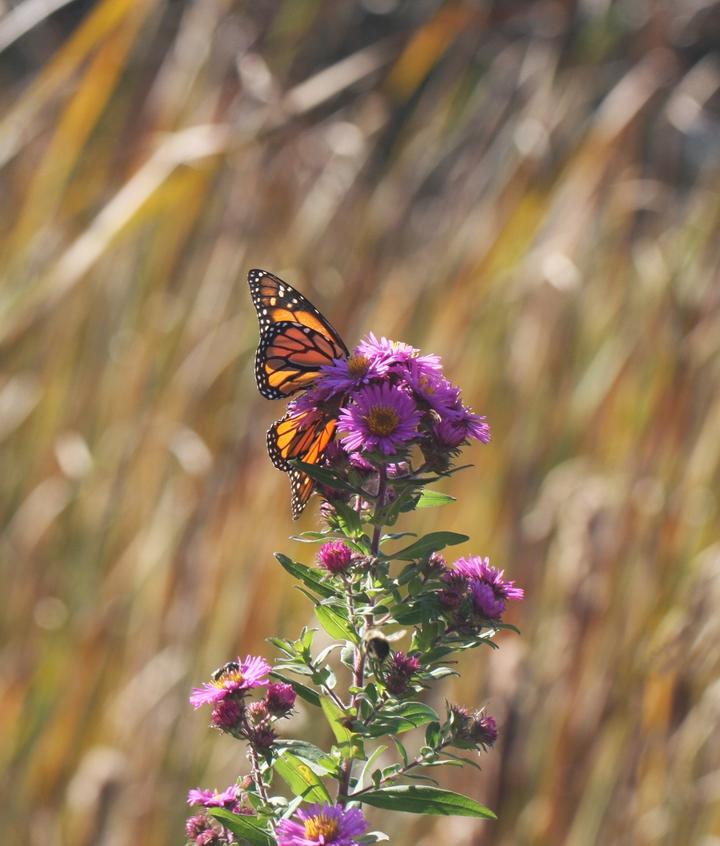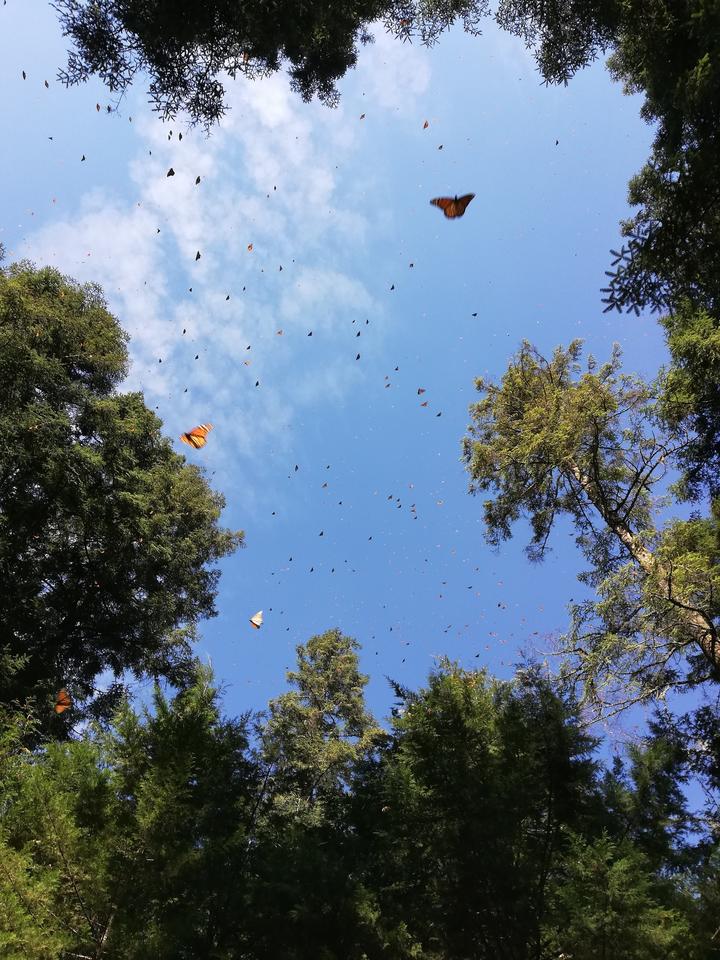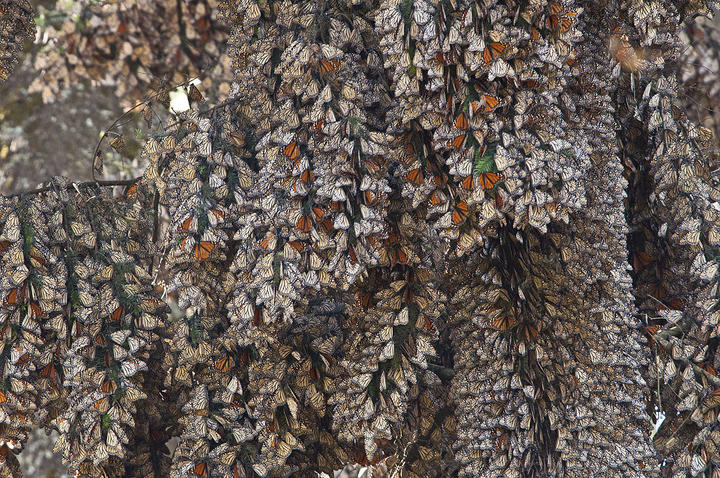More names for this insect
Anishinaabemowin: Memengwaa (butterfly)
Dakota: Kimamana (butterfly)
The Dakota and Anishinaabe were among the earliest people to name Minnesota’s plants and animals, as well as to understand them in relation to Minnesota’s climate and seasons. Those original names are still in use, and several are included on the Season Watch website.
Latin (or scientific name): Danaus plexippus
The scientific community has a convention of assigning agreed-upon Latin names to every kind of organism. Using scientific names helps people communicate confidently about the same organism and organize lifeforms based on how closely related they are.
Spanish: Mariposa monarca
Page contents
About the monarch
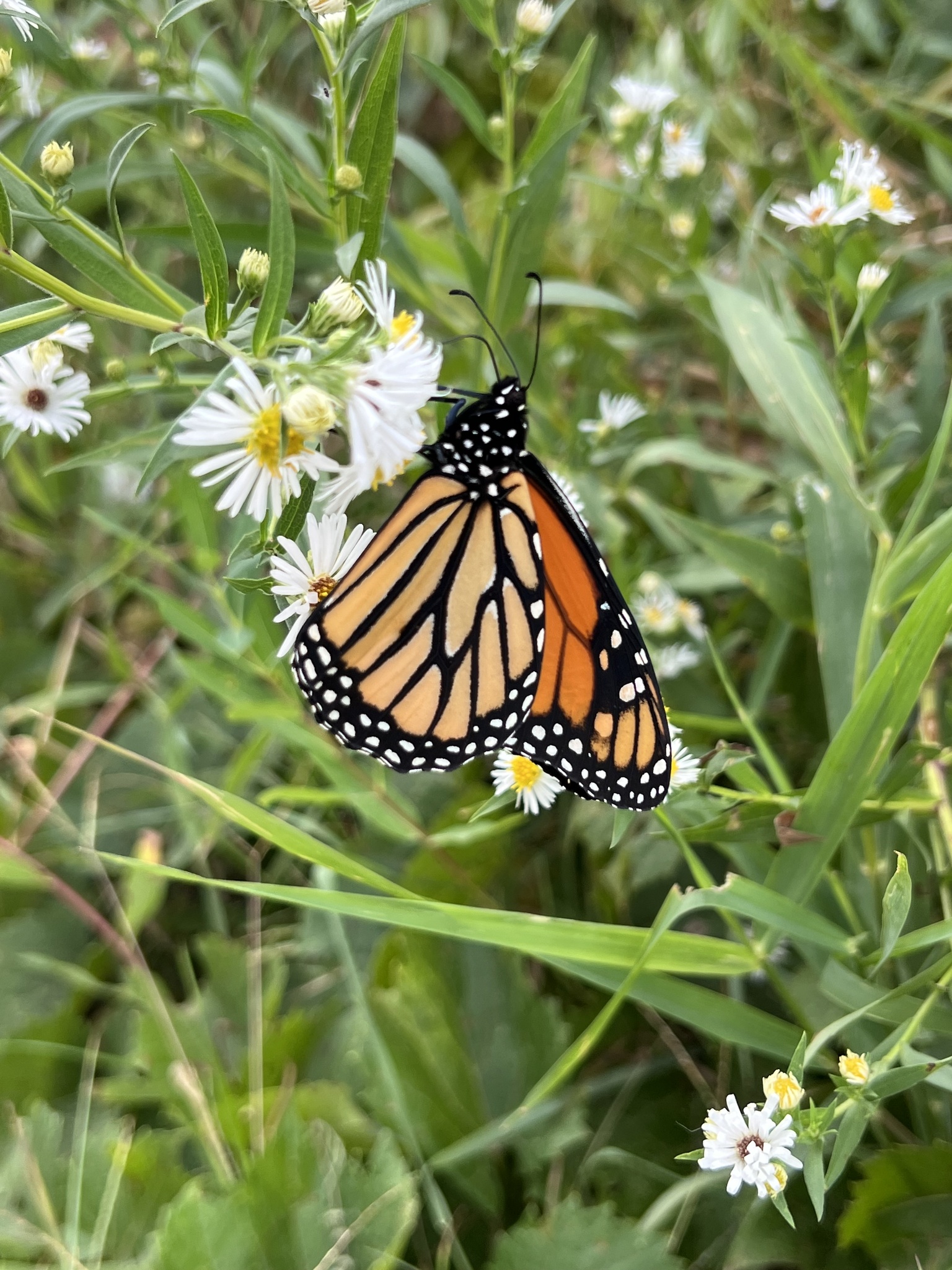
September 15, 2022, Chippewa County, Minnesota
Photo © ehammer, some rights reserved (CC-BY-NC)
iNaturalist observation
About the monarch
- The adult monarch is an orange butterfly that has black wing margins with two rows of white dots and black wing veins.
- They live in a variety of places including fields, meadows, roadsides, parks and backyards.
- In the spring and summer, monarchs feed on the nectar of flowering plants using a straw-like tube called a proboscis.
- Adult female monarchs lay their eggs on milkweed plants and the larvae only eat milkweed.
- In September, adults begin congregating in large numbers in trees and shrubs and by the end of October, they have left Minnesota for their wintering grounds in Mexico.
- Fun fact: Monarchs fly up to 100 miles per day during their 2,000 to 3,000 mile migration south.
- Fun fact: Monarch adults and caterpillars retain poison in their bodies from milkweed which in turn can protect them from predators.
- Monarchs migrate. Expand the "Migration animation" section below to learn more.
Visual guide to phenology
Watch for changes in monarchs' presence (or absence) and abundance at different times of year. Also, watch for the monarch's four stages of development: 1) egg; 2) caterpillar (also called "larva"); 3) pupa (also called chrysalis or cocoon); and 4) adult (the familiar winged butterfly).
Note to observers
This page explains general clues to watch and listen for when observing monarch phenology. However, this page does not explain how to identify this butterfly or collect data in a standardized way.
- Consult a field guide for help with identification.
- For guidance on collecting data, see Nature’s Notebook.
Graphs and historical data
Note: The Orientation Center provides a map, as well as information on reading graphs; interpreting summary statistics, who collected the data and how; and how to download datasets for independent exploration.
First seen
- Earliest: May 9 (occurred in 2012)
- Average: May 27
- Latest: June 20 (occurred in 1996)
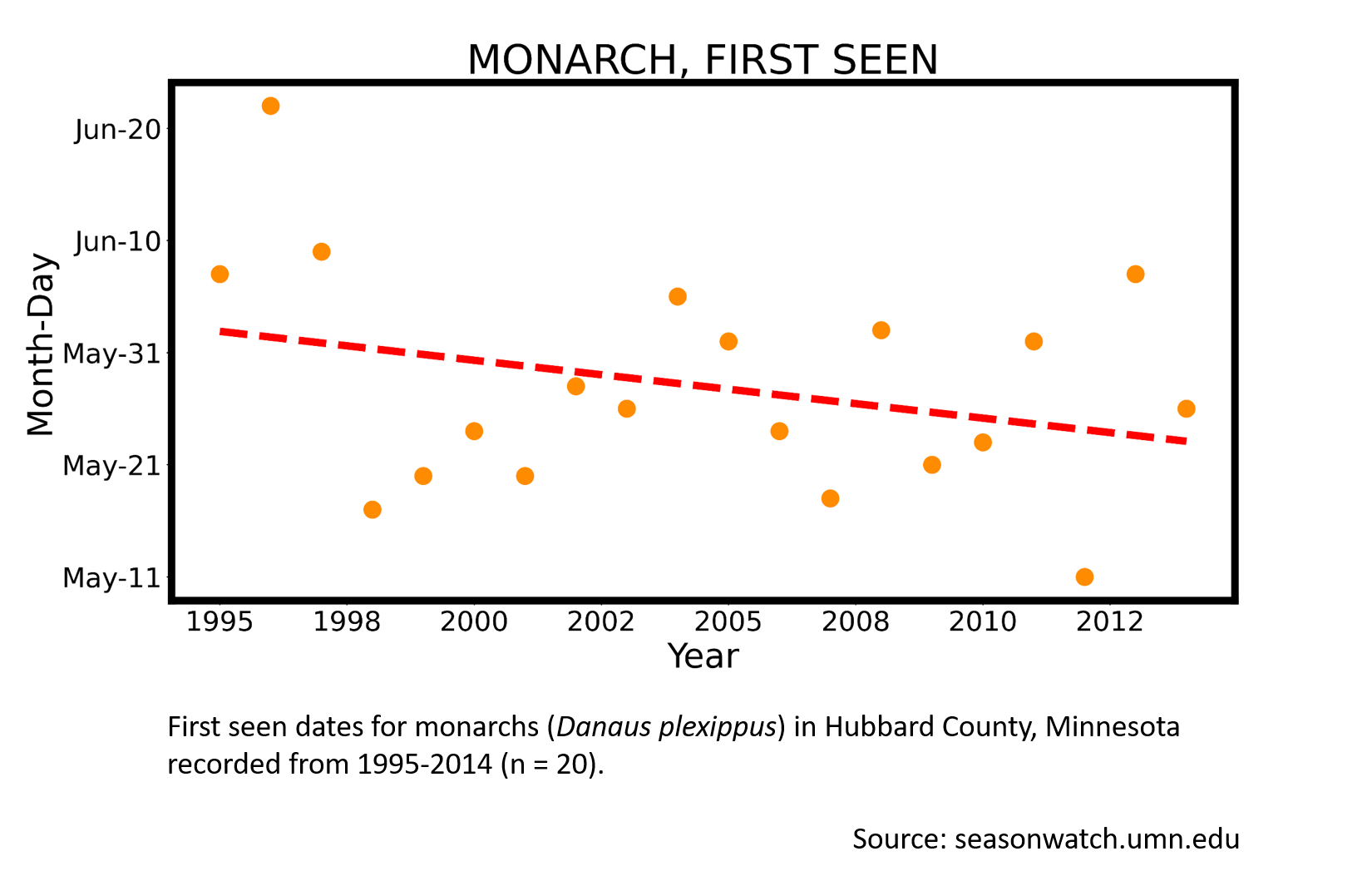
Last seen
- Earliest: September 14 (occurred in 2004)
- Average: October 2
- Latest: October 23 (occurred in 2014)
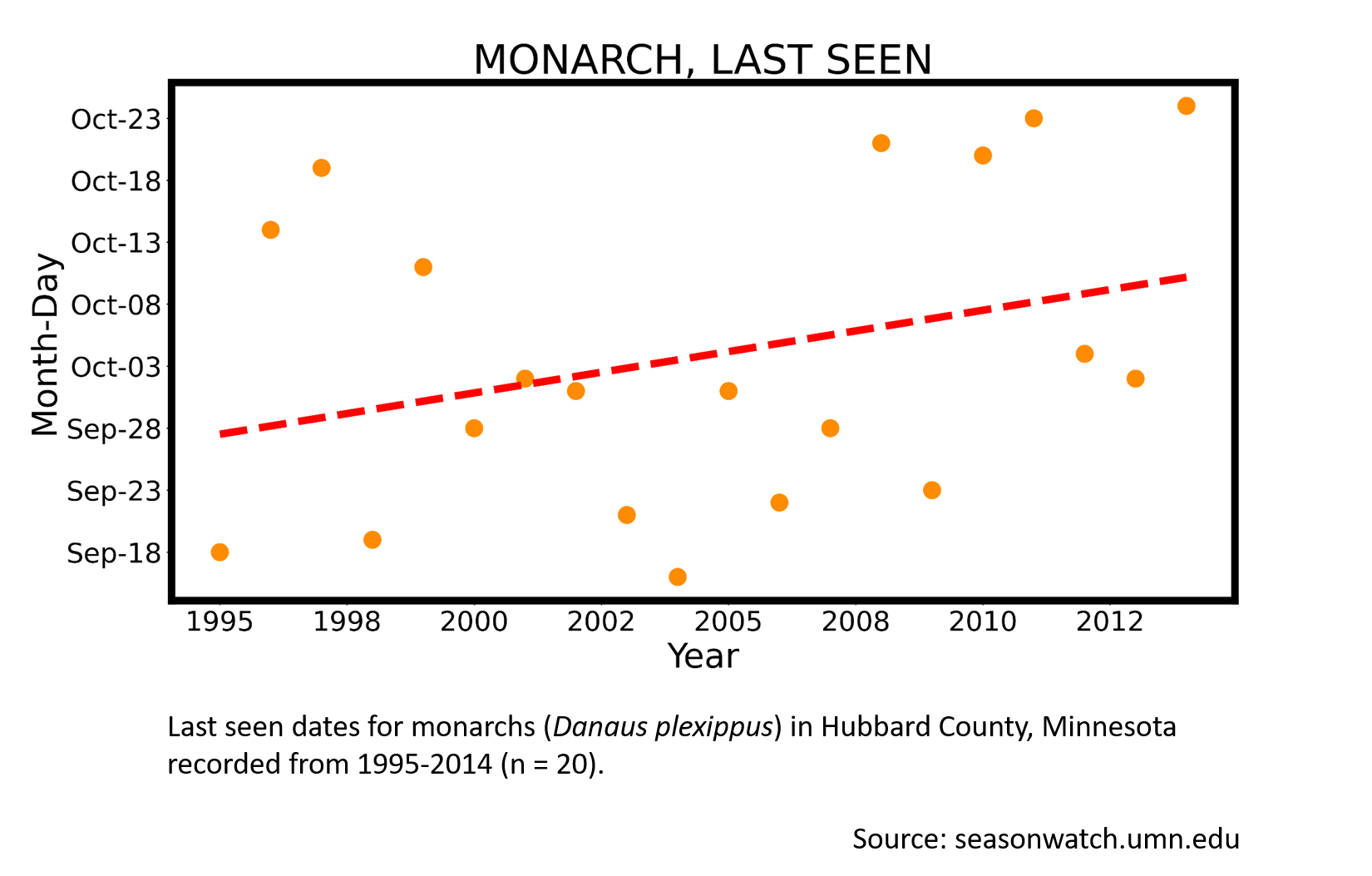
Download this dataset (.csv file)
More resources
Keep exploring Season Watch
Keep exploring Season Watch
Co-author: Jayme Hogan, Minnesota Master Naturalist
